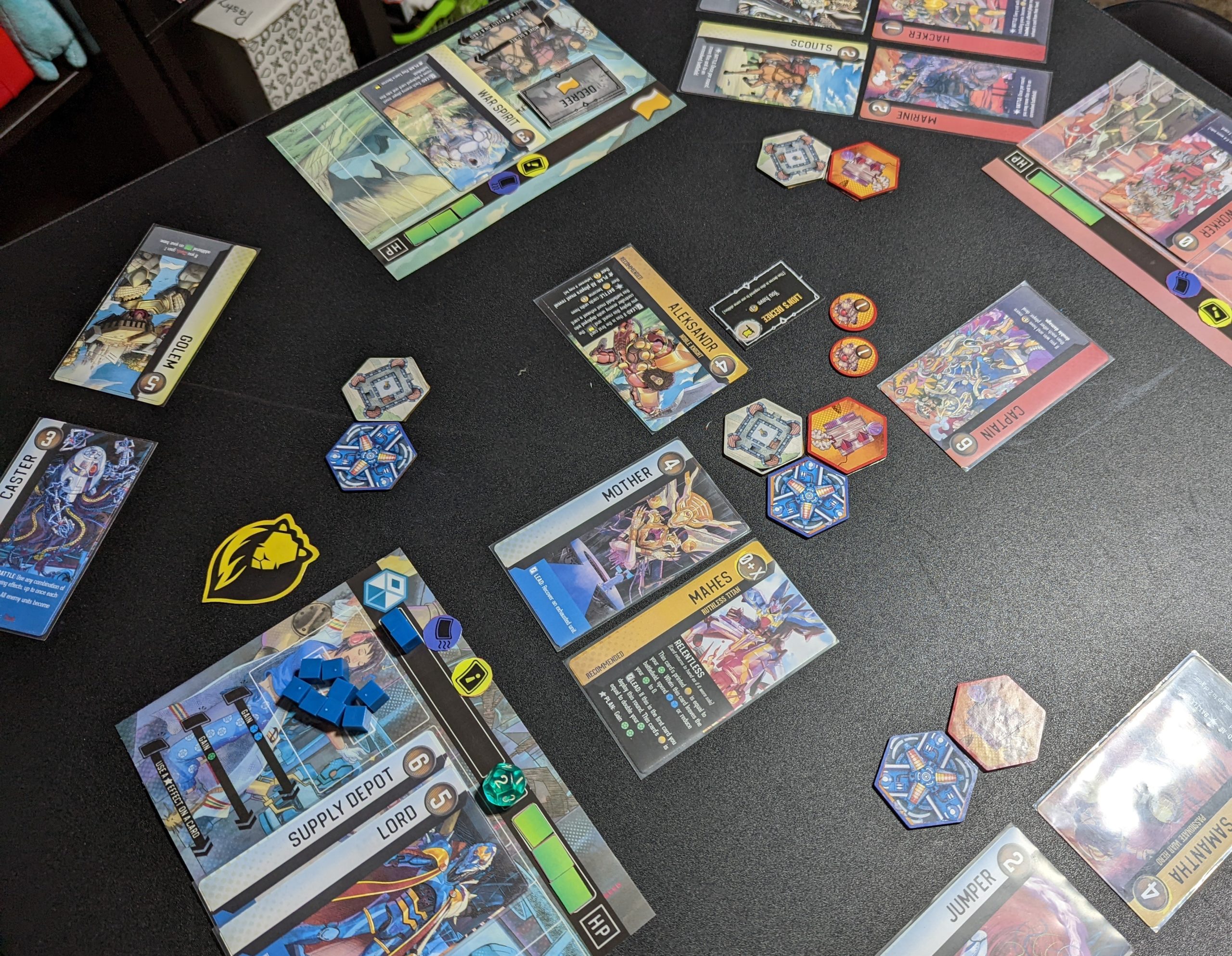
The game plays like this: Each player chooses a faction and grabs that faction’s components. Factions come with 7 unit cards that act as their army. Players pick and remove one of their units from the game, replacing it with a more powerful upgraded version of it, their Lion card, which acts as their quarterback/anchor.
During play, players take turns activating effects and setting unit cards on the board face-down. Each player has three battlegrounds to contend with: two that they share with the players on their left and right respectively (like Between Two Cities but angrier), and a Thunderdome in the center where all players engage in a battle royale. These lanes are where your units are placed. Since the units are face-down initially, you don’t quite know what players are putting down, but you know where they’re putting them, and you can react accordingly.
Once everyone has put 4 units down, or all players have passed in succession, all the cards are revealed and all battles are resolved, with the player with the highest total Strength in any given lane winning the battle in that lane and dealing damage to their opponent (or opponents, in the case of the Thunderdome). The wrinkle is that the order that the battlefields are resolved in matters due to various card effects, and that order is decided by the player with the first player marker (which rotates after each round). The first player has a distinct disadvantage during the Planning phase since they act and take turns first, meaning everyone else gets to react to and plan around what they do, but during the Battle phase, everyone else is at the first player’s mercy. Depending on how things shake out, they can seriously hurt someone by sequencing the battles to be as inconvenient to them as possible.

Once the round ends, all units are sent to a cooldown pile, and players don’t get them back until the next round, but units that don’t share the same lane with any allied units are returned to their owner’s hand immediately. It’s easy to just drop a bunch of units into one lane to overwhelm your opponents, but you only have 7 cards, so it’s not a sustainable strategy to just plop them down willy-nilly. Sometimes, you want to win a lane by Just Enough using a single card.
Something that consistently amazes me about this game is how much it gets done with so few cards. You’ll be seeing the same cards over and over again throughout the game, but the way they interact with each other won’t necessarily be the same from round to round. It wants you to familiarize yourself with your opponents’ capabilities so you can try to predict and outmaneuver them.

Gamers that are familiar with fighting card games like Exceed, BattleCON, Yomi, or SGS’s own Pocket Paragons will feel at home here with its premade factions and its bluff-heavy, double-blind, simultaneous reveal gameplay. At the same time, its rich cardplay and hand management scratches the ever-present Magic/Yugioh itch, while the multiplayer lane-based combat somewhat reminds of light skirmish games in the vein of Kemet or Inis.
Something that gamers might not like is the player elimination element: once your life hits 0, you drop out from the game. Personally, I find this preferable to letting players that aren’t in the running sit around and king-make for the rest of the match, but I can understand why it’s such a dealbreaker for players. That said, Space Lion usually plays tight enough that by the time a player gets eliminated, the game ends soon after.
If you’re looking for a deep & punchy card game that sets up and packs up quickly or a skirmish-y filler that you can squeeze into a lunch break, you can’t go wrong with this one.